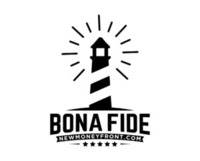IMARC Group’s report, “Jute Processing Plant Project Report 2025: Industry Trends, Plant Setup, Machinery, Raw Materials, Investment Opportunities, Cost and Revenue,” offers a comprehensive guide for establishing a manufacturing plant. The jute processing plant report offers insights into the manufacturing process, financials, capital investment, expenses, ROI, and more for informed business decisions.
Jute Processing Plant Project Report Summary: –
- Comprehensive guide for setting up a Jute processing plant.
- Covers market trends and industry outlook for 2025.
- Detailed project setup, including unit operations and processes.
- Raw material and utility requirements.
- Infrastructure and machinery specifications.
- Workforce and staffing requirements.
- Packaging and transportation details/.
- Financial aspects: investment opportunities, cost analysis, and revenue projections.
In addition to covering operational aspects, the report offers detailed insights into the jute processing plant process and project economics.
- Detailed insights into the jute processing plant
- In-depth project economics and financial metrics.
- Covers capital investments and project funding.
- Analysis of operating expenses and income projections.
- Breakdown of fixed and variable costs, direct and indirect expenses.
- Evaluation of ROI (Return on Investment) and NPV (Net Present Value).
- Profit and Loss account analysis.
- Comprehensive financial analysis for decision-making.
- Provides a roadmap for successfully establishing a jute processing.
Request for a Sample Report: https://www.imarcgroup.com/jute-processing-plant-project-report/requestsample
What is Jute?
Jute is a versatile, biodegradable, and cost-effective natural fiber primarily derived from the plants Corchorus capsularis and Corchorus olitorius. Renowned for its strength and durability, jute is extensively utilized in the production of sacks, ropes, mats, and other industrial goods, making it an integral material in packaging and textiles. It is predominantly cultivated in tropical regions, with India and Bangladesh accounting for the majority of global production. The fiber’s ability to be blended with other materials enhances its application across diverse industries, including agriculture, construction, and fashion. Notably, jute stands out for its eco-friendly attributes, being fully recyclable and having a low environmental footprint compared to synthetic alternatives. Its affordability and abundant availability position jute as a strategic resource for businesses seeking sustainable material solutions.
Market Trends and Drivers:
The jute market is witnessing substantial growth due to the rising demand for sustainable and biodegradable materials across industries. As governments worldwide impose stricter regulations on plastic usage, industries are transitioning to eco-friendly alternatives, with jute emerging as a preferred choice for packaging and agricultural applications. The packaging industry, in particular, drives significant demand, as jute bags and sacks replace plastic counterparts in transporting grains, vegetables, and other commodities. Additionally, the increasing adoption of jute-based products in home décor and furnishings reflects a growing consumer inclination toward sustainable lifestyles. Technological advancements in jute processing, such as blending with synthetic fibers, are enhancing its durability and expanding its application range. The export market for jute is also thriving, particularly in Europe and North America, where demand for eco-friendly products is strong. Furthermore, government initiatives in major jute-producing countries, including subsidies for jute farming and research, are supporting market expansion. The advent of innovative jute-based composites in automotive and construction sectors further exemplifies the material’s evolving role in industrial applications. These factors are collectively creating a positive outlook for the market further across the world.
Key Insights Covered in the Jute Processing Plant Report
Market Coverage:
- Market Trends: Analysis of current and emerging trends in the jute market.
- Market Segmentation: Breakdown of the market by different segments.
- Regional Analysis: Distribution and performance of the market across various regions.
- Price Analysis: Evaluation of pricing trends for agricultural battery sprayer.
- Impact of COVID-19: Examination of the effects of the COVID-19 pandemic on the jute market.
- Market Forecast: Outlook and projections for the jute industry.
Key Aspects Required for Setting Up a Jute Plant
Detailed Process Flow:
- Product Overview: Comprehensive description of the jute product and its characteristics.
- Unit Operations Involved: Step-by-step breakdown of the various operations in the production process.
- Mass Balance and Raw Material Requirements: Calculations for material inputs and outputs, along with required quantities of raw materials.
- Quality Assurance Criteria: Standards and procedures to ensure the quality of the final product.
- Technical Tests: Essential tests and evaluations to maintain product consistency and compliance.
Project Details, Requirements, and Costs Involved
- Land, Location, and Site Development: Assessment of land requirements, optimal location selection, and site development costs.
- Plant Layout: Design and layout planning for efficient plant operations.
- Machinery Requirements and Costs: Identification of machinery needed, along with the associated costs.
- Raw Material Requirements and Costs: Determination of the types and quantities of raw materials required and their costs.
- Packaging Requirements and Costs: Specifications for packaging materials and equipment, including associated expenses.
- Transportation Requirements and Costs: Logistics planning and cost estimation for the transportation of raw materials and finished products.
- Utility Requirements and Costs: Analysis of utility needs (such as water, electricity, and fuel) and their associated costs.
- Human Resource Requirements and Costs: Workforce planning, including staffing needs, roles, and costs for labor and management.
Project Economics
- Capital Investments: Initial costs required for setting up the jute processing plant, including land, equipment, and infrastructure.
- Operating Costs: Ongoing expenses for running the plant, such as raw materials, labor, utilities, and maintenance.
- Expenditure Projections: Detailed forecasts of all costs over the short and long term.
- Revenue Projections: Expected income generated from the sale of jute and by-products.
- Taxation and Depreciation: Analysis of tax obligations, incentives, and asset depreciation over time.
- Profit Projections: Estimated profitability based on costs, revenues, and market conditions.
- Financial Analysis: Comprehensive evaluation of the plant’s financial viability, including cash flow analysis, return on investment (ROI), and break-even point.
Ask Analyst for Customization: https://www.imarcgroup.com/request?type=report&id=10301&flag=C
Customization Options Available:
- Plant Location: Selection of optimal location for the plant.
- Plant Capacity: Customization based on desired production capacity.
- Machinery: Choice between automatic, semi-automatic, or manual machinery.
- List of Machinery Providers: Identification of suitable machinery suppliers.
Key Questions Addressed in This Report:
· How has the jute market performed so far, and how will it perform in the coming years?
· What is the market segmentation of the global jute market?
· What is the regional breakup of the global jute market?
· What are the price trends of various feedstocks in the jute industry?
· What is the structure of the jute industry, and who are the key players?
· What are the various unit operations involved in a jute processing plant?
· What is the total size of land required for setting up a jute processing plant?
· What is the layout of a jute processing plant?
· What are the machinery requirements for setting up a jute processing plant?
· What are the raw material requirements for setting up a jute processing plant?
· And more…
How IMARC Can Help?
IMARC Group is a global management consulting firm that helps the world’s most ambitious changemakers to create a lasting impact. The company provide a comprehensive suite of market entry and expansion services. IMARC offerings include thorough market assessment, feasibility studies, company incorporation assistance, factory setup support, regulatory approvals and licensing navigation, branding, marketing and sales strategies, competitive landscape and benchmarking analyses, pricing and cost research, and procurement research.
Services:
- Plant Setup
- Factoring Auditing
- Regulatory Approvals, and Licensing
- Company Incorporation
- Incubation Services
- Recruitment Services
- Marketing and Sales
Contact Us:
IMARC Group
134 N 4th St. Brooklyn, NY 11249, USA
Email: sales@imarcgroup.com
Tel No:(D) +91 120 433 0800
United States: +1-631-791-1145














